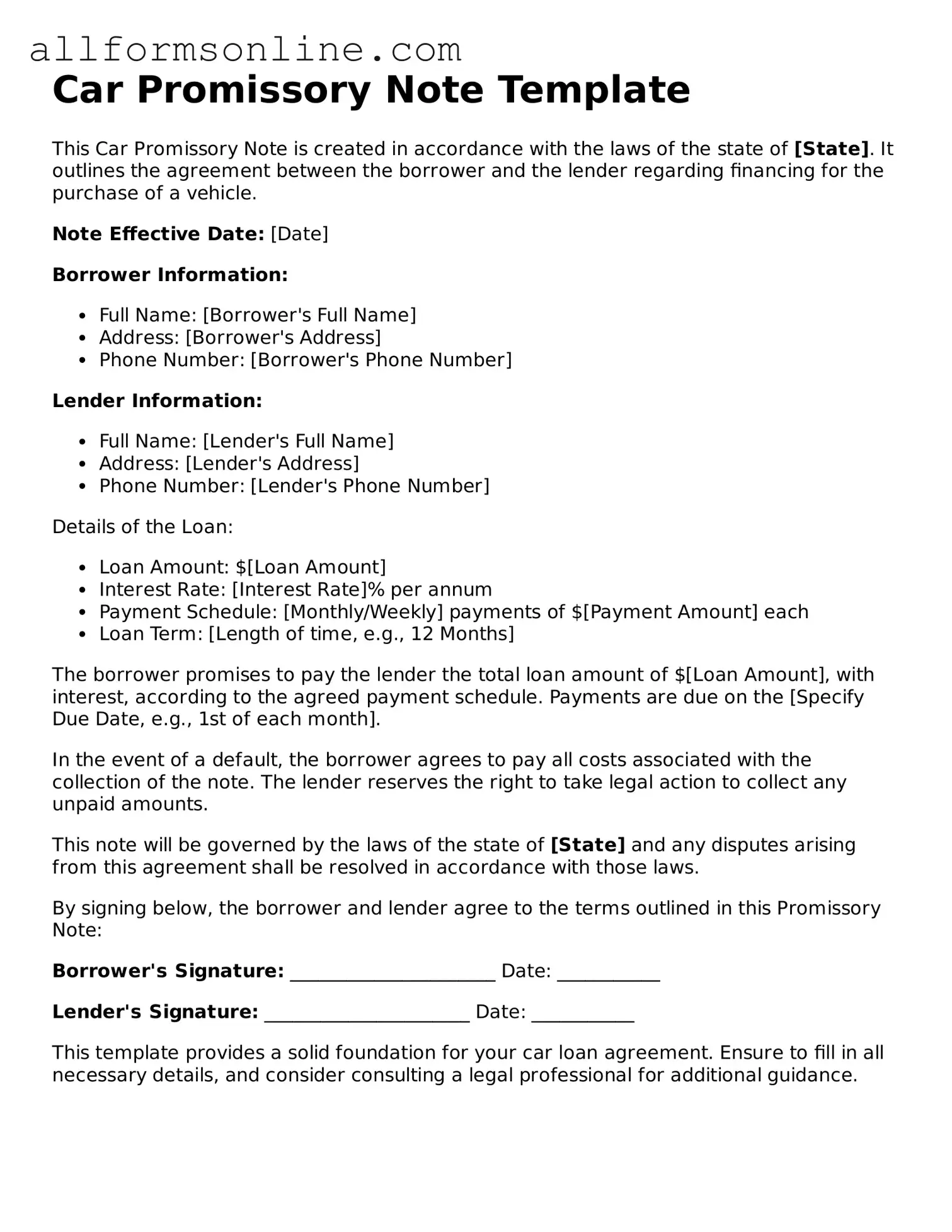What is a Promissory Note for a Car?
A Promissory Note for a Car is a legal document that outlines a borrower's promise to repay a loan used to purchase a vehicle. This note includes details such as the loan amount, interest rate, repayment schedule, and any collateral involved. Essentially, it serves as a written agreement between the lender and borrower, ensuring both parties understand their obligations.
Why do I need a Promissory Note for a Car?
This document is important because it protects both the lender and the borrower. For the lender, it provides a legal recourse if the borrower fails to repay the loan. For the borrower, it clearly outlines the terms of the loan, preventing misunderstandings about payment amounts and due dates. Having a written agreement can also help build trust between the parties involved.
What information should be included in the Promissory Note?
Key information to include in the Promissory Note consists of the names and addresses of both the borrower and lender, the loan amount, interest rate, repayment terms, and the due date for payments. Additionally, it’s wise to specify what happens in case of default, such as repossession of the vehicle. Including these details can help avoid disputes later on.
How is the Promissory Note enforced?
If the borrower fails to make payments as agreed, the lender can enforce the Promissory Note through legal action. This might involve filing a lawsuit to recover the owed amount or, if applicable, repossessing the vehicle. The note serves as evidence of the debt, making it easier for the lender to prove their case in court.
Can I modify the terms of the Promissory Note?
Yes, modifications can be made, but both parties must agree to the changes. It's crucial to document any amendments in writing and have both parties sign the updated agreement. This ensures that everyone is on the same page and protects both the lender's and borrower's interests.
Is it necessary to have a lawyer review the Promissory Note?
While it’s not strictly necessary, having a lawyer review the Promissory Note can be beneficial. A legal expert can ensure that the document complies with state laws and adequately protects your rights. This extra step can provide peace of mind and help prevent potential issues down the road.
